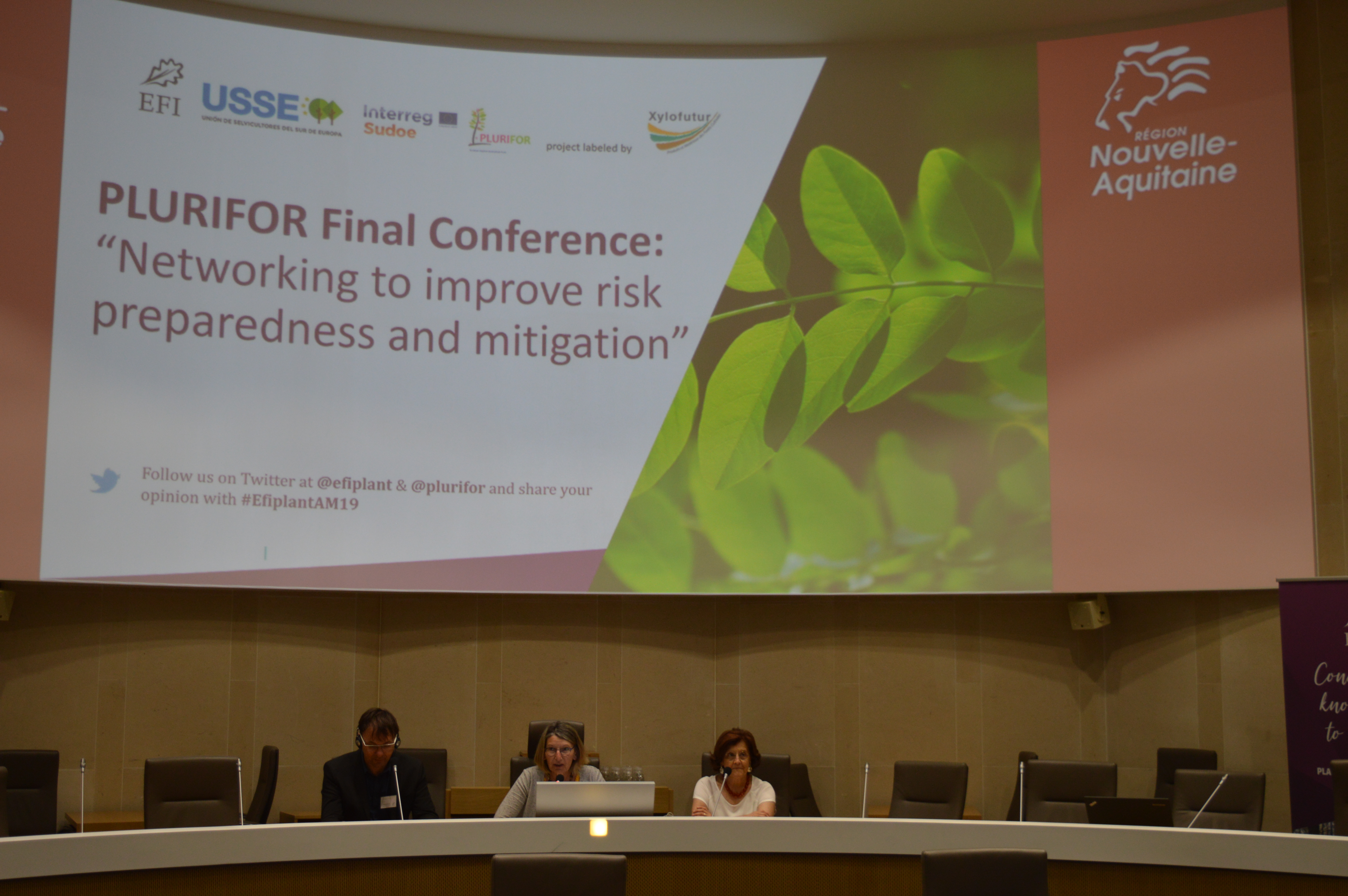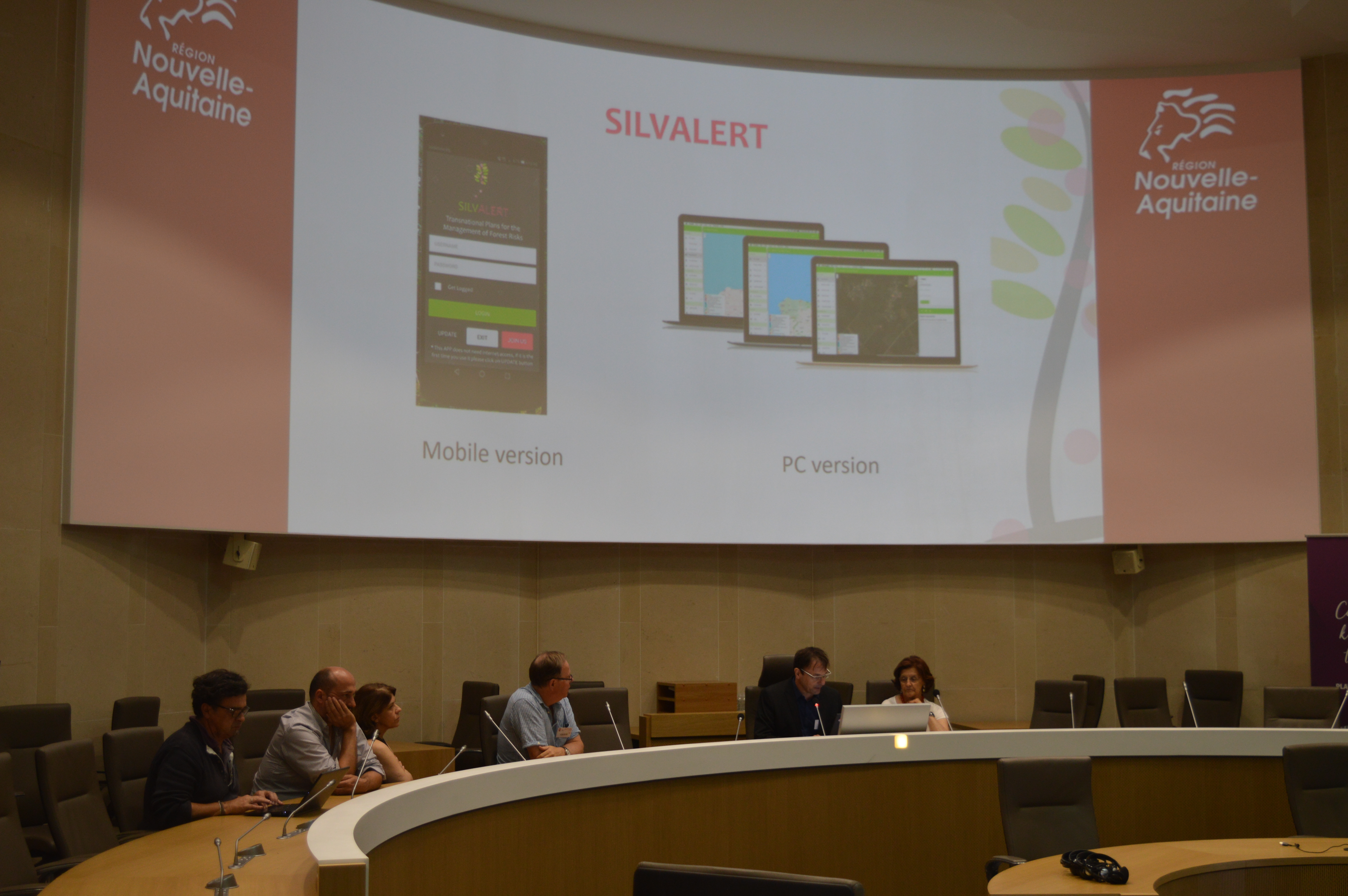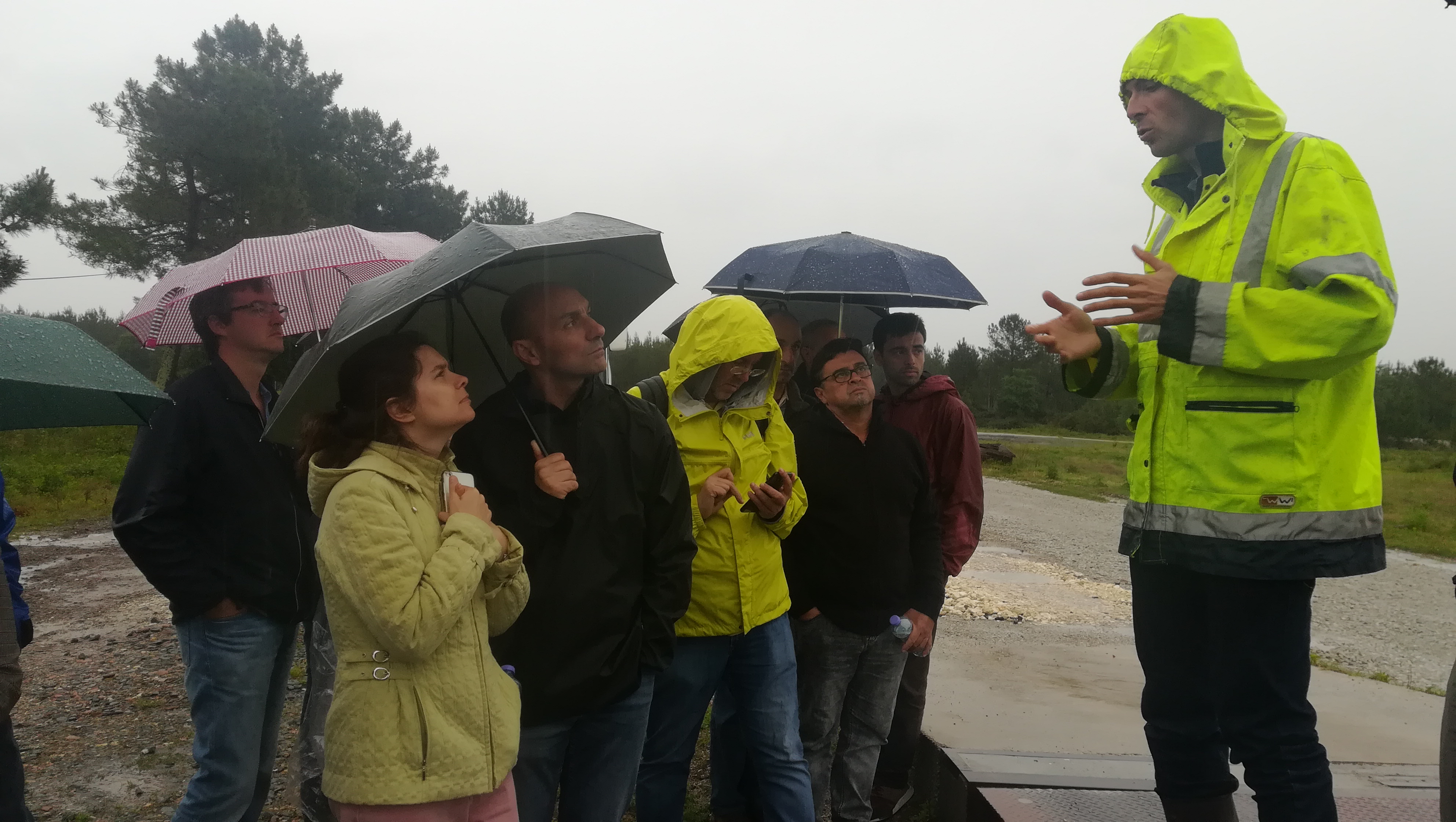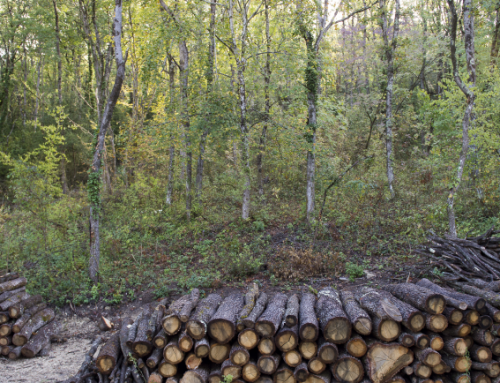Forests are an important landscape in south west Europe where they occupy more than 30% of the landcover. However, disturbances induced by global change or trade (e.g.: forest fire, storms, pest and diseases, human activities) render these ecosystems more vulnerable. Moreover, natural disasters which occur in forests and their impacts do not know administrative barriers. And, precisely, the European project, PLURIFOR, whose Final Conference took place on 4-5 June in Bordeaux, France, has been working on the vulnerability of south-western European forests to similar forest hazards since it was created in 2016.
The 3-year project aimed at creating/improving plans and tools to improve the management of 8 forest risks (storm, fire, soil degradation, pinewood nematode, chestnut gall wasp, Eucalyptus weevil, pine pitch canker, and emerging pests and pathogens) through transnational collaboration. Funded by the European Union (EU) Interreg South West program (SUDOE), the project gathered 11 partners and 21 associate partners (research institutes, universities, forest-related organizations (unions, associations, services) across France, Spain and Portugal and was coordinated by the European Forest Institute.
A four-step methodology was followed:
- surveys/ interviews of public forest authorities and regional private forest owners associations to identify current plans and tools used to manage prevailing forest hazards,
- evaluation workshops between forest experts and practitioners to exchange and improve existing protocols and to create new plans and tools based on the identified gaps,
- assessment workshops to test the efficiency of improved/new plans and tools through forest hazard simulation
- training workshops to present the improved/new plans and tools to the end users.
Altogether, 13 plans and 27 tools were developed such as remote sensing and forest health protocols, forest damages reporting application, soil degradation and forest fuels maps, critical wind speed and height models, biological control protocols, genetic tools for fungus identification, … Various communication tools (e.g. website; twitter account, flyer) were also implemented to create awareness, inform and promote citizen participation in forest risk management.
The project successfully ended in June 2019. Nonetheless, as forest risk management remains an on-going challenge, the European Forest Institute stays engage in forest risk management through activate participation in other regional projects and in forest risk networks.
Read more about the conference here.
Article by Sarah Yoga







Escribe un comentario
Debes iniciar sesión para escribir un comentario